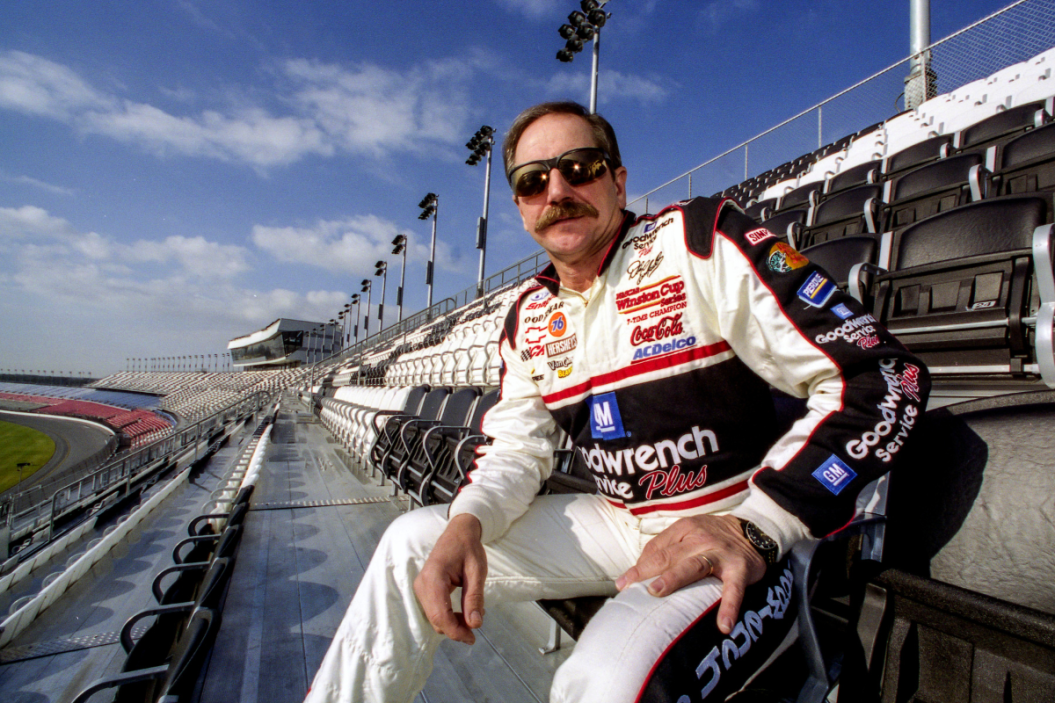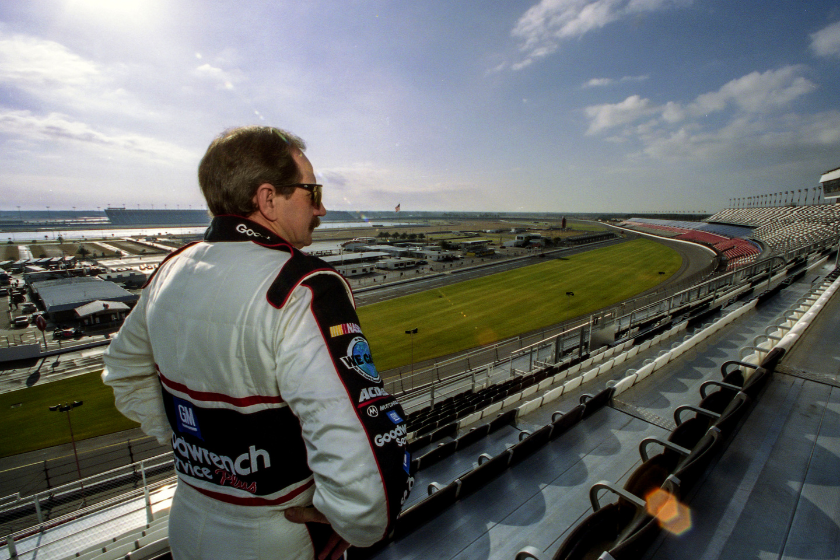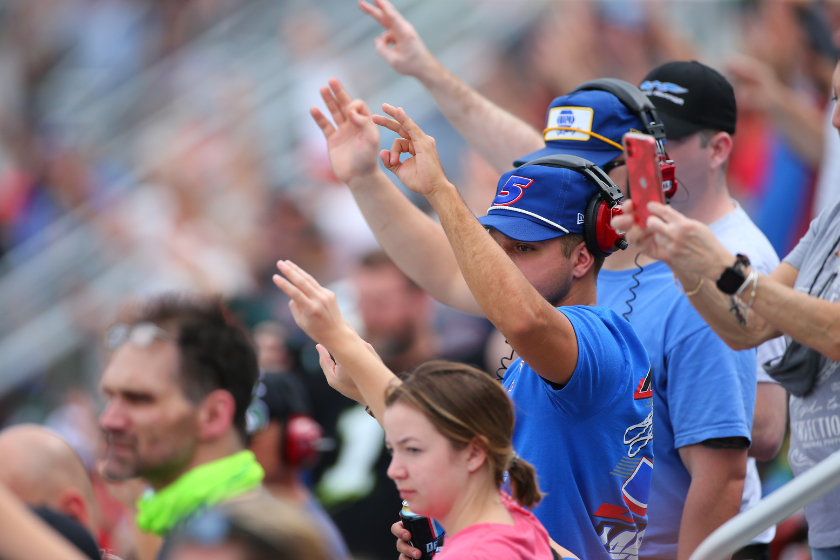When looking back on important moments in NASCAR history, most fans prefer to remember the positive ones. The record-setting qualifying times. The exciting rookie debuts. The big wins. The sport is filled with over 70-years worth of moments like this. Yet, sadly, the single most significant occurrence to transpire on a NASCAR track is one steeped in tremendous sadness. It not only completed devastated the NASCAR world, but is considered to be one of the greatest tragedies in the history of sports. That moment is the death of NASCAR legend Dale Earnhardt on the final lap of the 2001 Daytona 500.
Videos by FanBuzz
On February 18, 2001, Dale Earnhardt Sr. lost his life at the 43rd running of the "Great American Race" following a collision on the outside wall at Daytona International Speedway. He was 49 years old. Even after all these years, we still feel the impact of NASCAR's most tragic wreck. Here's a look at exactly what happened leading up to, during, and in the immediate aftermath of that fateful day.
Dale Earnhardt: NASCAR Legend
Known as "The Intimidator," Dale Earnhardt left an indelible mark on the sport of professional auto racing. With 76 race wins and 428 top-10 finishes over the course of his nearly 30-year career, Earnhardt was a seven-time NASCAR Cup Series champion, tying him with Richard Petty and Jimmie Johnson for most titles in NASCAR history. While he shares the spotlight with Johnson and Petty when it comes to Cup titles, Dale effectively helped to bring NASCAR to the mainstream more than any driver before or since. Most NASCAR fans have no problem with calling him the greatest driver in the sport's history.
Still, not every major NASCAR accomplishment came easily to Dale. Before the Kannapolis, North Carolina legend's untimely death in Daytona Beach, Florida in 2001, Earnhardt finally won the Daytona 500 in 1998. His big win at the "Super Bowl of Stock Car Racing" came after 20 years of trying and failing. Coming into the 2001 running of the inaugural Winston Cup Series race, he was going for a second Daytona 500 victory. Unfortunately, Dale would never get that second victory.
What Happened at the 2001 Daytona 500?
Dale Earnhardt was calm and confident the morning of the 2001 Daytona 500.
Though Senior led for 17 laps in his No. 3 Goodwrench car, the real battle that day was between Michael Waltrip's No. 15 Chevrolet and Dale Earnhardt Jr.'s No. 8 Chevrolet. Considering that both Waltrip and Dale Jr. were teammates on Dale Sr.'s racing team, Dale Earnhardt Inc., Senior raced an uncharacteristically defensive race, seemingly content with hanging onto third.
Coming into the back straightaway on lap 173, Robby Gordon turned Ward Burton's Dodge in the outside lane. Burton then hit Tony Stewart, who collected a good chunk of the field behind him. Stewart's Joe Gibbs Racing Pontiac took the brunt of the damage, but a total of 18 cars were caught up in the wreck, including Dale Jarrett and Hendrick Motorsports teammates Terry Labonte, Jeff Gordon, and Jerry Nadeau. As a result of the "Big One," the race had to be red-flagged so that the cars could be removed and the debris could be cleaned up. During the ensuing caution period, Earnhardt chillingly told Richard Childress, the owner of his No. 3 car for Richard Childress Racing, "Richard, if they don't do something to these cars, it's gonna end up killing somebody."
The race restarted on lap 180, with Junior and Waltrip still duking it out for first. On the final lap coming into turn 4, Earnhardt made light contact with Sterling Marlin, causing him to slightly lose control. As he attempted to regain it, he collided with Ken Schrader's car and slammed head-on into the retaining wall at speeds of around 160 MPH. After spinning wildly, both cars eventually came to a stop on the infield grass.
Schrader escaped his race car with minor injuries. He then quickly went over to Earnhardt's car to check on his friend. It wasn't good. The severe head injuries he had sustained were apparent.
Moments later, Michael Waltrip saw the checkered flag at the 2001 Daytona 500, and Darrell Waltrip got to excitedly call his brother's big win from behind the broadcast booth. Dale Jr. finished second. Rounding out the top five were Rusty Wallace, Ricky Rudd, and Bill Elliott. Sadly, Michael's trip to Victory Lane and Junior's best finish at Daytona would be shrouded in tragedy. Dale Earnhardt Sr. was pronounced dead at the Halifax Medical Center in Daytona Beach, Florida by Dr. Steve Bohannon at 5:16 PM Eastern Standard Time. The autopsy report showed that Earnhardt died instantly of blunt force trauma to his head as well as a basilar skull fracture.
Dale Earnhardt's death on the last lap of the Daytona 500 in 2001 sent shockwaves through the professional auto racing community. Sporting News would later refer to the day that Dale died as "Black Sunday."
The Aftermath of Dale Earnhardt's Death
On February 22, funeral services were held for Earnhardt at Calvary Church in Charlotte, North Carolina.
Soon after, both a police investigation and a NASCAR-sanctioned investigation were conducted to determine whether there were any preventable causes surrounding Earnhardt's death. Bill Simpson, whose company Simpson Performance Products made the seatbelt that Dale Sr. wore during the NASCAR race, resigned following speculation of serious safety flaws with the belt. NASCAR officials implemented rigorous safety improvements as a result, including mandating safer barriers and the HANS device, which was a head and neck restraint.
Meanwhile, days after the crash, Sterling Marlin received a number of death threats from fans blaming him for Earnhardt's death. In a later interview, Marlin gave his side of the story.
"I definitely didn't do anything intentional," Marlin said. "We were just racing our guts out for the last lap of the Daytona 500. Everybody was going for it. Dale's car got caught in the middle [three-wide with Ken Schrader]. I was as low as I could go. Whether Rusty Wallace got him loose and down into me, I don't know. You have to talk to Rusty Wallace. I watched the tape one time and that is all I want to see it."
Despite fans' animosity towards him, Dale Earnhardt Jr. publicly absolved Marlin from any culpability. During an episode of The Dale Jr. Download in February 2023, Junior discussed how he defended Marlin while he was receiving death threats.
While everyone in the NASCAR community was still mourning the death of Earnhardt in its immediate aftermath, he needed a replacement at RCR. That replacement came in the form of Kevin Harvick, who would make his rookie debut in the No. 29 Chevy at the Dura Lube 400 on February 25. Two weeks later at Atlanta Motor Speedway, he edged out Jeff Gordon by .006 seconds to win his first Cup race. At the time, this broke the record for earliest career start for a driver to win a race. To celebrate his win, and pay tribute to Dale Sr., he drove backwards on the track and held three fingers out of his driver's window in honor of the iconic No. 3 Chevy
Now, Dale's fatal crash certainly wasn't the first tragedy in motorsports. In fact, fellow drivers Kenny Irwin and Adam Petty had sadly died in wrecks just the previous year. But, the death of Dale Earnhardt was a worldwide news story. The tragedy would truly show, even to folks who had barely of NASCAR before, the immense dangers that professional racers face when they step inside that car.
Today, Earnhardt's legacy lives on through NASCAR fans old and young. Go to any NASCAR race today, and you're bound to here at least a couple fans yell "Do it for Dale!" or simply throw up three fingers. Dale Earnhardt may have died at the 2001 Daytona 500, but his legacy lives on.



